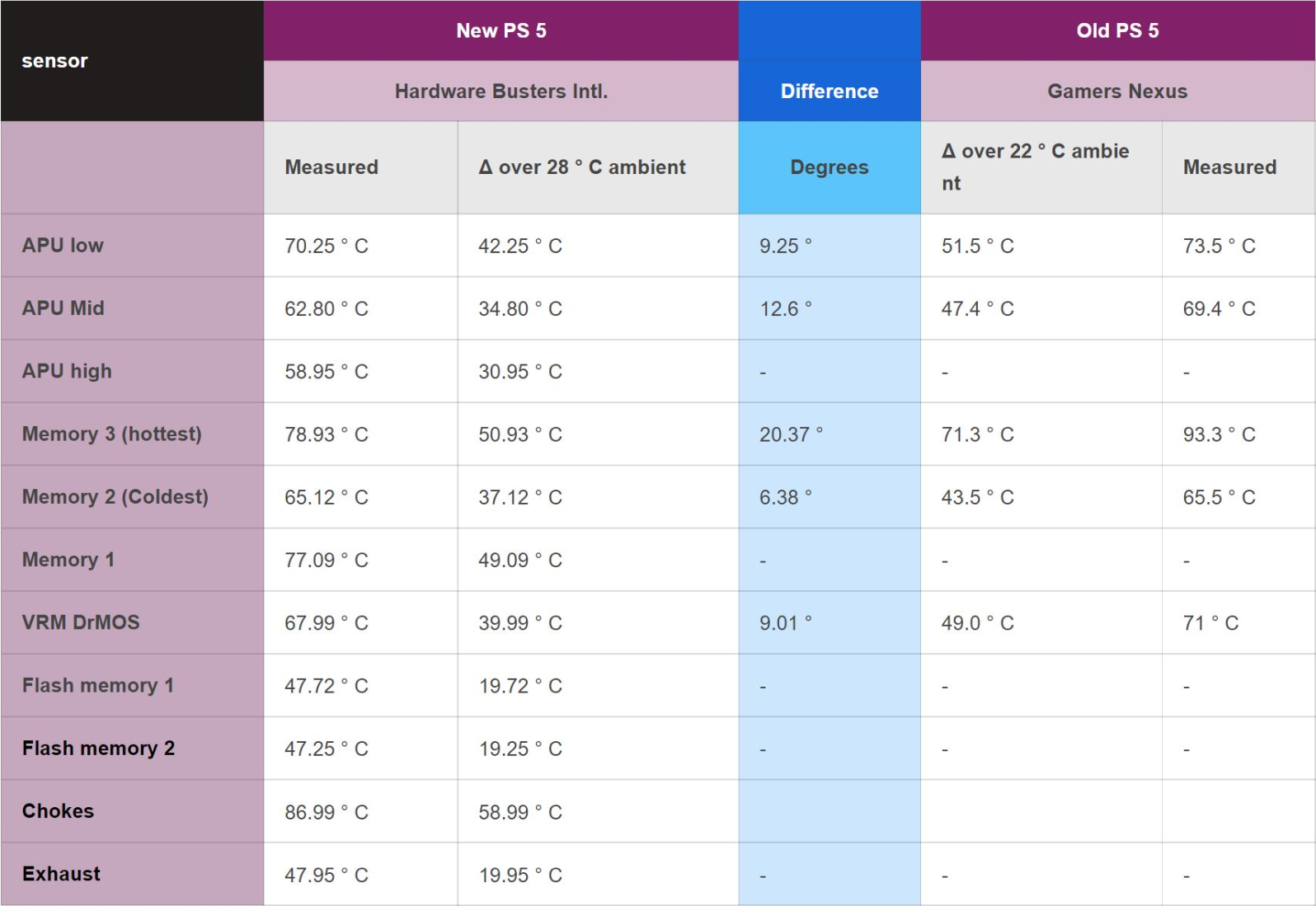Refreshed PS5 models run cooler than first revision consoles after all
In context: A yr later the PS5's launch, Sony decided to revise the console, introducing some small changes and a noticeable update on the cooling side. This update featured a new and smaller heatsink, which implied less cooling performance, but as information technology seems, it isn't every bit linear as that.
The first tests run by Austin Evans, although limited, concluded that the exhaust temperatures of the refreshed model were between 3º C to 5º C hotter. In the video, Austin also compared the arrangement'southward new cooling solution with that of the "old" console, showing the departure in size, material, construction and a different fan. Another departure noted past the YouTuber was the Wi-Fi antenna setup, but no tests were conducted on it.
The higher frazzle temperatures per se don't evidence the organisation has worse cooling performance. Information technology just shows that the air getting out of the panel is hotter. This could be due to several reasons, including the new position of the heatsink. A high frazzle temperature is too a consequence of efficient cooling, not but of components running hot.
Farther testing was made past HardwareBusters, using sensors attached to different parts of the panel, including the VRM, exhaust, VRAM and CPU. As per the data, the CPU runs 11º C cooler in the new PS5 console, from 51º C to 40º C. Equally for retention and VRM temperatures, they've increased 7.5º C and 1.5º C, respectively. Frazzle temperatures of the old PS5 were about two.5º C lower.
Still, that wasn't the end. After some unpleasant accusations of HardwareBusters testing methodology, the YouTube channel partnered with Igor'south LAB, and took new measurements to compare with GamerNexus' test results nerveless from an older PS5. Instead of but comparing measured temperatures, they used the Δ over ambient temperatures to better represent the divergence between both models.

According to the data shown in the table, the new PS5 model looks overall superior to the older console. Although some values could not be compared due to the lack of information on the sometime PS5, we tin can all the same bank check the improvements in VRM, memory and APU temperatures.
The APU was running 10-12º C cooler, similar to what we've seen in the first tests run by HardwareBusters, merely the real surprise was in the VRM and memory. Both were running much cooler compared to GamerNexus' PS5, with VRM temperatures being virtually 9º C lower and retentivity temperatures likewise, ranging from six.4º C to 20.4º C.
Other tests run by HardwareBusters testify the fan duty wheel was about the same between the old and new models, merely measured dissonance was slightly college on the latter at idle. Ability consumption of the ii models while gaming was extremely similar, with a slight tendency of being higher in the new model. On the abode screen, the refreshed PS5 tends to consume less power.
Table credit: Igor's Lab
Source: https://www.techspot.com/news/91194-refreshed-ps5-models-run-cooler-than-first-revision.html
Posted by: coledowasud.blogspot.com


0 Response to "Refreshed PS5 models run cooler than first revision consoles after all"
Post a Comment